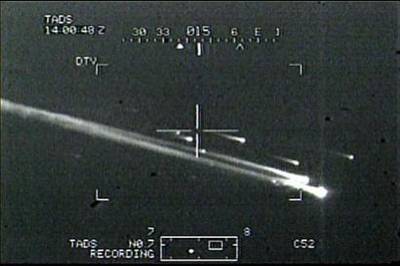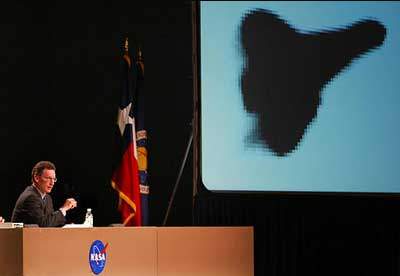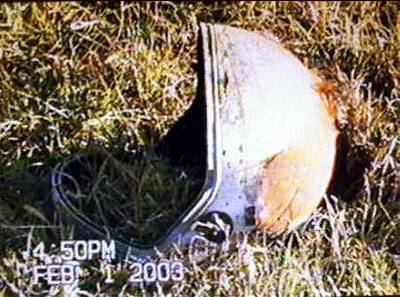Lesson Learned From Columbia Disaster
 The US military has said "yes" to a NASA request
for detailed satellite images of space shuttles in orbit on a
regular, ongoing basis. The agreement comes amid persistent
questions about why no pictures were taken of possible damage to
Columbia's wing, even though it was suggested before the
orbitor disintegrated, Feb. 1.
The US military has said "yes" to a NASA request
for detailed satellite images of space shuttles in orbit on a
regular, ongoing basis. The agreement comes amid persistent
questions about why no pictures were taken of possible damage to
Columbia's wing, even though it was suggested before the
orbitor disintegrated, Feb. 1.
NASA Administrator Sean O'Keefe on Friday announced the
agreement with the U.S. National Imagery and Mapping Agency to use
the agency's spy satellites "during targets of opportunity" without
NASA having to make specific requests for such images. O'Keefe
described the agreement as saying in effect, "When you have the
opportunity, please take it. We'll either use [the images] to great
effect or autograph them and send them back."
PR Pre-emption
The disclosure was a pre-emptive public-relations strike against
hundreds of pages of internal NASA e-mails the space agency plans
to release publicly early next week. Some of those e-mails, already
turned over to the board investigating the Feb. 1 disaster,
describe several NASA employees as pleading for surveillance images
during Columbia's mission to help determine whether the
shuttle could return safely, O'Keefe said.

The Investigation To This Point:
Investigators believe superheated air penetrated
Columbia's left wing, which was struck 81 seconds after
liftoff by a briefcase-sized chunk of insulating foam that broke
away from the shuttle's external fuel tank. The investigating board
has already indicated it will recommend NASA push for better
coordination between the space agency and military offices in
charge of satellites and telescopes.

The Tale Of The E-mails
 E-mails NASA intends to disclose as early as
Monday describe engineers debating the extent of possible damage to
Columbia's heat tiles, unusual cabin temperatures during
the mission, rust found on the orbiter and a fracture discovered in
a component of the shuttle's fuel lines, O'Keefe said.
E-mails NASA intends to disclose as early as
Monday describe engineers debating the extent of possible damage to
Columbia's heat tiles, unusual cabin temperatures during
the mission, rust found on the orbiter and a fracture discovered in
a component of the shuttle's fuel lines, O'Keefe said.
The deal disclosed Friday will make available to NASA, free or
at low cost, detailed pictures of the shuttle during future
missions, even though it remains unclear how useful such images
might be. Each one of the shuttle's delicate insulating tiles, for
example, is about 3 inches wide. The level of useful detail
satellites might capture as shuttles fly nearby is a closely
guarded secret, but O'Keefe -- himself a former senior Defense
Department official -- suggested that America's capability "isn't
anything like what a Clancy novel would have you believe."
NASA is still working out details about which of its employees
will have adequate security clearance to view the sensitive images
that the military's top satellites might take of shuttles. O'Keefe
described the number of employees during Columbia's flight
who could view such images as "no more than single digits, and
you've got a lot of fingers left over on one hand." Some NASA
engineers had argued during Columbia's 16-day mission that
photographs of possible damage to the spacecraft's left wing might
have helped determine whether the shuttle could return safely.

Could Sat Images Have Saved Columbia?
Before the Columbia disaster, NASA turned down an offer
by the mapping agency to have its satellites take pictures of the
shuttle, and NASA officials withdrew another unofficial request for
Air Force telescopes to take pictures of Columbia.
O'Keefe said he would not discuss for security reasons how U.S.
spy satellites operate. But he acknowledged there were
opportunities to capture images of Columbia and that these
"would have been very convenient." O'Keefe said he was not making a
decision about whether those images might actually have helped
determine the extent of damage to Columbia.
 SpaceX to Launch Inversion RAY Reentry Vehicle in Fall
SpaceX to Launch Inversion RAY Reentry Vehicle in Fall Aero-News: Quote of the Day (04.23.24)
Aero-News: Quote of the Day (04.23.24) Aero-News: Quote of the Day (04.20.24)
Aero-News: Quote of the Day (04.20.24) ANN's Daily Aero-Linx (04.20.24)
ANN's Daily Aero-Linx (04.20.24) Aero-News: Quote of the Day (04.21.24)
Aero-News: Quote of the Day (04.21.24)







